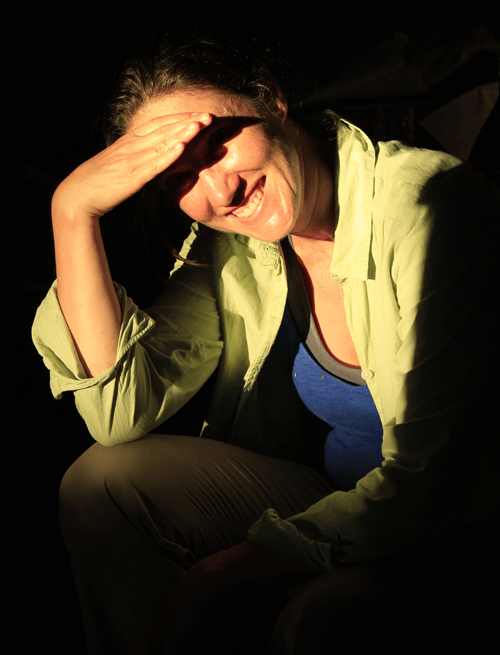
Producer, co-director
I moved to Peru 23 years ago to escape the safety of my small Canadian city. My hometown had once belonged to the Huron nation. They were expelled and decimated during colonization. The only remnant of this once mighty people amidst the modern car factories and nuclear power plants was the name: “Oshawa,” which means carrying place or portage.
My life and work in Peru brought me into contact, and friendships, with indigenous people from the Andean and Amazon regions. I began to learn from their knowledge and connections to the natural and spiritual world.
Leonardo’s stories of the Karuara remind me of my grandfather’s mysterious disappearance in Lake Joseph, on territory that was originally inhabited by the Ojibwa nation. My grandfather’s body was never found, but no one considered that he might still be alive, living at the bottom of the lake.
Most of North America’s white settler society has lost its spiritual connection with water – even though our European ancestors believed in mermaids, selkies and the Loch Ness monster. As I delve further into the Karuara’s magical world, I’m not just helping Leonardo revive and preserve his culture, I’m also discovering my own.
The Kukama’s stories are at once unique and precious, and also universal: all humans need water to survive. Our lives begin in water; we are nourished by it and born in it.
This film is more than a celebration of the Kukama’s art, music and ancient stories: it is an urgent call to protect Amazonian cultures and with them, the world’s largest tropical rainforest – the lungs of our planet.

Co-director, animations
I first traveled to Peru’s northern Amazon 15 years ago. I spent a month in the Shipibo village of San Francisco giving a painting workshop to children and youth. On the last day, as part of the workshop, I danced in a circle with my students to the sound of their parents’ flutes and drums. That night I dreamed about Qoyllurity, a sacred mountain near my birthplace in Cusco.
In my dream the Apu Sinakara (a sacred glacier) had lost its snow. I was sad, but the mountain taught me its value was within. So I went inside and sat near the women who silently light candles with deep faith. Suddenly it was daylight and I was crossing a river in the jungle, taken from the hands of a long line of my brothers. I was the last in line.
Ten years later the Shipibo painter Bima Inuma and I mounted a joint exhibition of our paintings in Lima called “Tinkuy, Nukoananty,” which means “the meeting between the Andes and the Jungle.”
During the exhibition I met Leonardo Tello a Kukama poet and dreamer who was trying to keep his native language and culture alive through his work in community radio. We talked for a long time and began to dream of making a film together.
I want to see Kukama children watching animations about their own culture.


